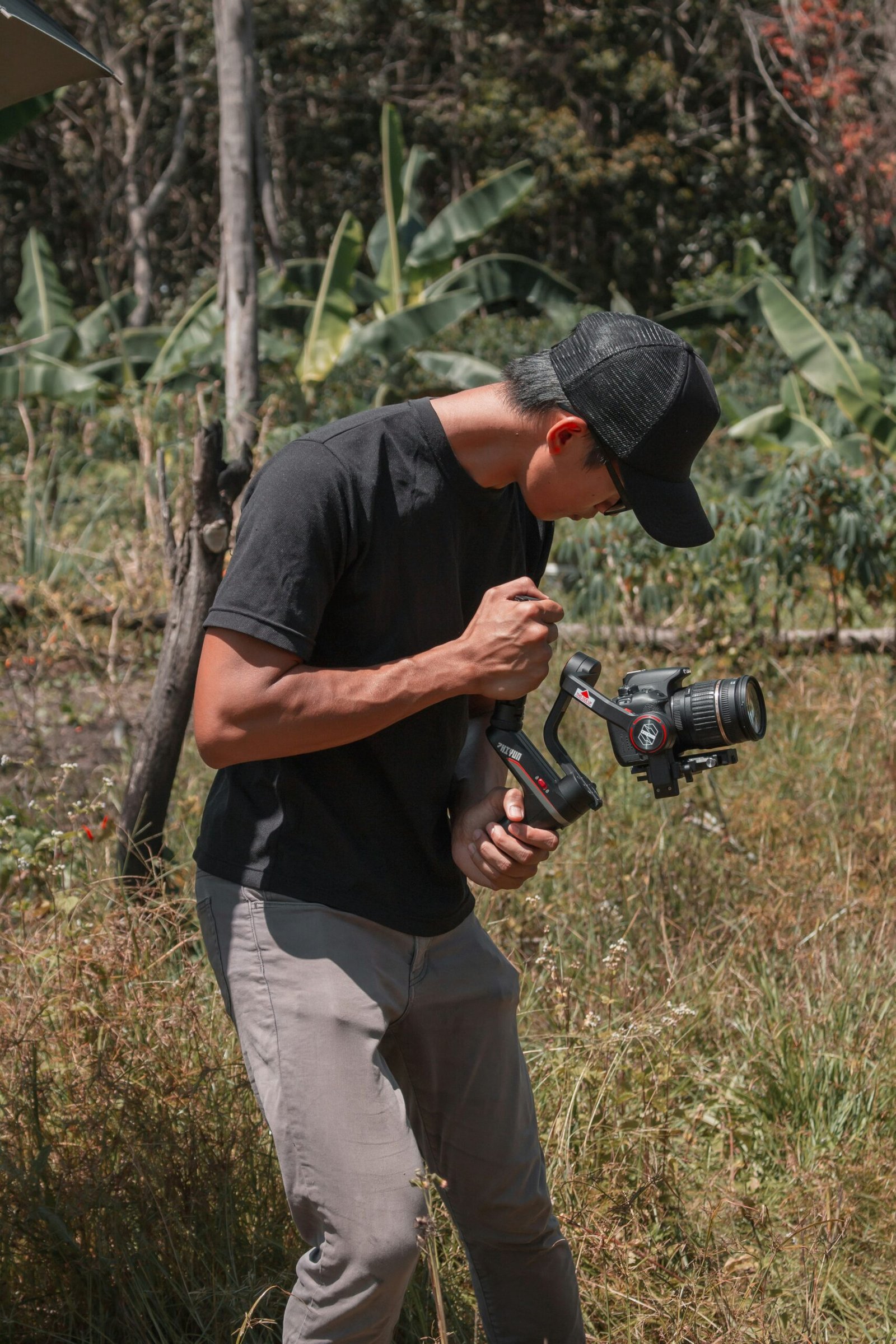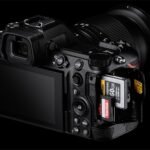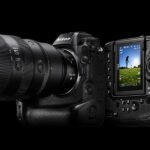
How Does the Autofocus System Compare to Previous Models?
The Nikon Z6 III represents a significant upgrade in autofocus capabilities compared to its predecessors, the Z6 II. One of the most notable improvements is in its low-light performance; the Z6 III demonstrates enhanced sensitivity and precision even in dim environments, ensuring sharp focus where previous models might have struggled. This advancement is particularly beneficial for photographers who often work in challenging lighting conditions.
When it comes to fast-moving subjects, the Nikon Z6 III showcases substantial enhancements as well. With an increased number of focus points and refined algorithms, the camera provides quicker and more accurate tracking. These improvements result in fewer missed shots, making the Z6 III a reliable choice for sports and wildlife photography. The tracking capabilities are bolstered by the advanced Eye-Detection AF and Animal-Detection AF features, ensuring the subjects are consistently in focus.
In terms of speed, the Z6 III’s autofocus system operates faster than the Z6 II, significantly reducing lag time between shots. This speed is crucial for photographers who need to capture critical moments, such as during events or dynamic scenes. The improvements in speed and accuracy are further complemented by a more responsive and user-friendly interface, which allows for quick adjustments and seamless shooting experiences.
When compared with other competitors in the market, the Nikon Z6 III holds its ground impressively. Its autofocus system rivals that of similar high-end models, offering comparable—or even superior—performance features. This places the Z6 III as a formidable contender, ensuring photographers receive top-notch autofocus capabilities without compromise.
Overall, the enhancements in the Nikon Z6 III’s autofocus system mark a significant leap from the Z6 II. Its improved performance in low-light scenarios, faster-focusing speeds, and advanced tracking make it a versatile and powerful tool for various photographic applications. Whether you’re capturing fleeting wildlife moments or working in dim venues, the Z6 III proves to be a robust and reliable choice.

Video Capabilities and Limitations of the Nikon Z6 III
The Nikon Z6 III is a highly capable camera, particularly for those interested in video production. One of its standout features is its ability to record video in stunning 6K resolution. This capability not only offers incredible detail and clarity but also provides flexibility in post-production, allowing for cropping and resizing without significant loss of quality. For filmmakers and content creators, this advanced resolution can be a game-changer.
Additionally, the Nikon Z6 III includes internal raw recording, a highly sought-after feature by professional videographers. Internal raw recording allows for greater control over the final image, offering superior quality, dynamic range, and the ability to make extensive adjustments during the editing process. This feature makes the Z6 III a robust tool for high-end video production, providing an edge in professional environments where detail and flexibility are paramount.
However, with advanced features come concerns, particularly regarding the camera’s ability to handle extended recording sessions without overheating. Users of previous models and cameras with similar capabilities have faced issues where prolonged use led to overheating, resulting in interruptions in recording. The Nikon Z6 III has addressed these concerns by incorporating improved thermal management systems.
In practical terms, this means that the Z6 III can perform well under real-world conditions. While it’s always advisable to monitor the camera during extended shoots, Nikon has made strides in ensuring that the Z6 III can handle longer recording sessions more efficiently. This advancement minimizes the risk of overheating, thus offering users a more reliable and consistent video recording experience.
Overall, the Nikon Z6 III stands out not only for its technical video capabilities, such as 6K recording and internal raw recording but also for its improved handling of potential limitations, making it a formidable choice for serious videographers seeking to push the boundaries of their craft.
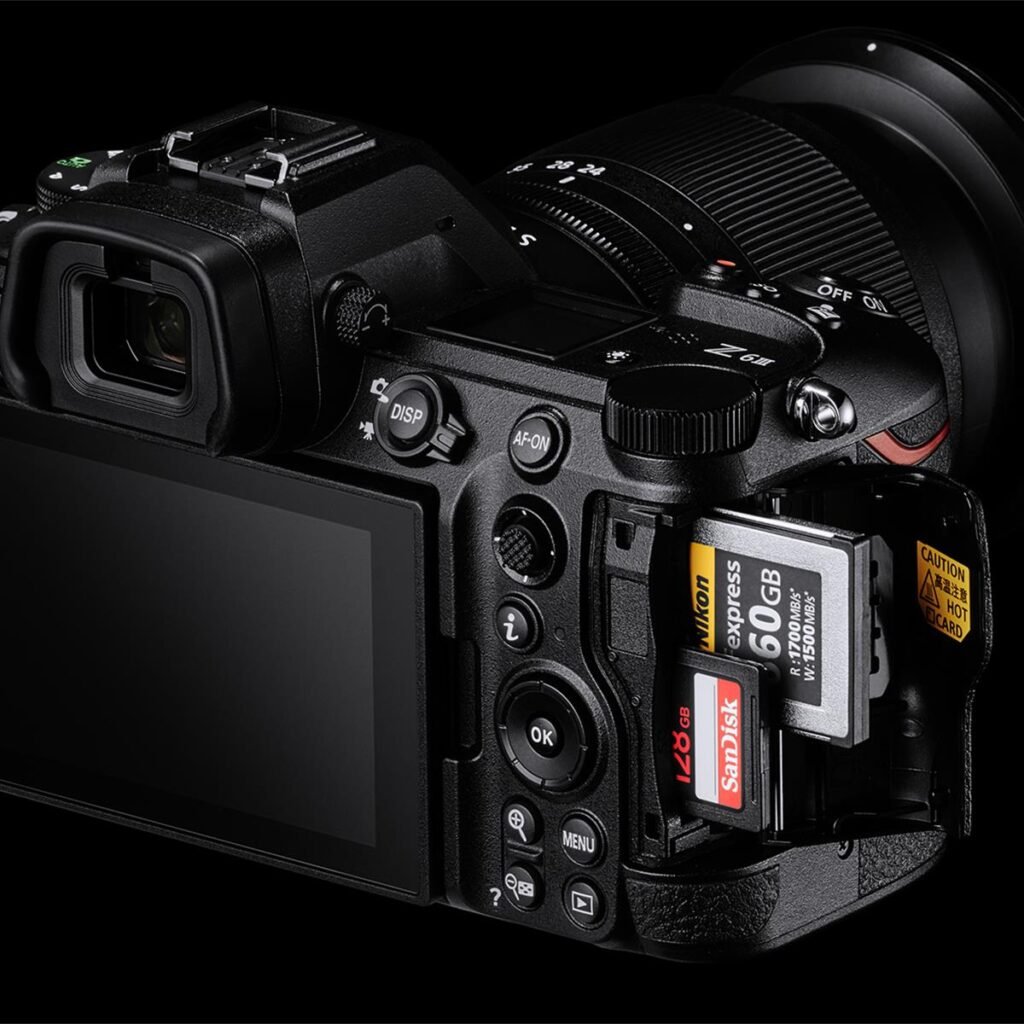
Impact of the New Sensor on Image Quality
The Nikon Z6 III introduces a groundbreaking partially stacked sensor, a significant evolution from its predecessor, the Z6 II. This new sensor technology is expected to bring a myriad of improvements in terms of image quality, enhancing the overall photography experience.
One of the most prominent advancements is in dynamic range. The Z6 III’s sensor allows for an expanded range of tones between the darkest shadows and the brightest highlights. This translates to images with richer details and more subtle gradations, significantly reducing the risk of losing information in high-contrast scenes. Photographers can now capture scenes with more accuracy and depth, bringing their visions to life more vividly than ever before.
Low-light performance has also seen substantial advancements. The Z6 III’s partially stacked sensor is designed to optimize light capture, making it more sensitive to varying lighting conditions. This results in clearer, more detailed images with less noise, even in environments with challenging lighting. This capability is particularly beneficial for photographers who frequently shoot during twilight or in dimly lit settings, as it ensures the preservation of fine details and colors.
Overall image quality has taken a significant leap with the Z6 III’s new sensor. The enhanced resolution and more efficient data processing contribute to sharper, more precise imagery. Colors are rendered more accurately, providing a more true-to-life representation of the subject. Additionally, the improved sensor architecture facilitates faster readout speeds, reducing rolling shutter effects and allowing for smoother video recording.
When compared to the Z6 II, the Z6 III showcases noticeable improvements across several key parameters. The new sensor’s superior dynamic range and low-light capabilities, coupled with overall enhancements in image clarity and color fidelity, mark the Z6 III as a formidable upgrade from its predecessor. These advancements solidify the Z6 III’s position as a leading choice for photographers seeking top-tier image quality.
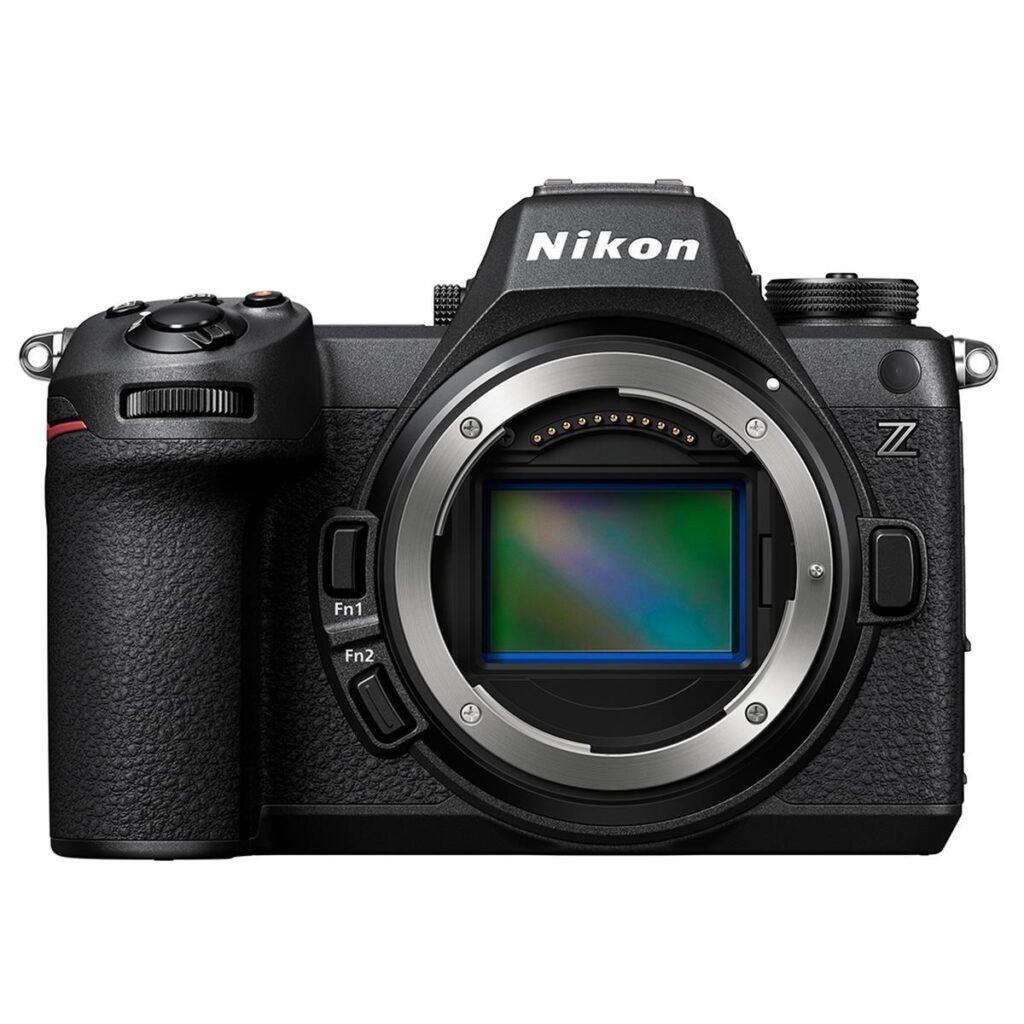
Is the Fully Articulated Screen a Significant Upgrade?
The transition from a tilting screen to a fully articulated screen on the Nikon Z6 III marks a significant upgrade in terms of usability and flexibility. This advancement primarily caters to the diverse needs of photographers and videographers, enhancing their ability to capture creative angles and compositions with greater ease. The fully articulated screen allows the user to adjust the viewing angle horizontally and vertically, facilitating a broader range of configurations compared to the prior tilting-only mechanism.
One of the standout benefits of the fully articulated screen lies in its versatility for shooting scenarios that require unconventional angles. For instance, low-angle shots, which were previously cumbersome, become much more manageable by simply flipping the screen out and downward. Similarly, high-angle photography is facilitated by tilting the screen upward, reducing the need to rely solely on the viewfinder or blindly guessing the frame. Additionally, the fully articulated screen is invaluable for self-portraiture and vlogging, as it allows users to see themselves while filming or taking photographs, ensuring optimal framing.
In comparing this design to the three-way tilting screen found on the Nikon Z9, it becomes apparent that while the Z9’s screen accommodates high and low angle shooting effectively, it lacks the same degree of flexibility when capturing lateral angles or front-facing shots. The fully articulated screen advantages are particularly noticeable during video recording, where dynamic framing and real-time monitoring of composition are crucial. This setup allows creators to seamlessly switch between different perspectives without the need for cumbersome setups or multiple takes.
Ultimately, in practical terms, the fully articulated screen enhances user experience by offering a multifaceted approach to framing shots. Whether it’s for professional photo shoots, casual photography, or video production, the fully articulated screen provides users with a robust tool for achieving more creative and dynamic visual content. The elevated convenience and versatility provided by this design underscore its superiority over other screen mechanisms, making it a valuable feature of the Nikon Z6 III.
Comparing the Nikon Z6 III to Z8 and Z9: Key Differences
When considering a new camera, understanding the distinctions between various models is crucial. For potential buyers, comparing the Nikon Z6 III with its higher-end counterparts, the Z8 and Z9, is essential to make an informed decision. This comparison will focus on performance, features, and overall value to delineate how the Z6 III measures up.
Firstly, performance is a significant factor. The Nikon Z6 III is equipped with a full-frame, 24.5-megapixel sensor, balancing resolution and sensitivity effectively. However, the Z8 and Z9 surpass this with higher resolution sensors; the Z8 features a 45.7-megapixel sensor, while the Z9 boasts a 50.1-megapixel powerhouse. These higher-end models offer enhanced image detail, which is particularly advantageous for professional photographers requiring superior quality.
In terms of speed, the Z6 III has a commendable maximum continuous shooting rate of 14 frames per second (fps), perfect for most scenarios. The Z8 and Z9, on the other hand, cater more to action and sports photography enthusiasts, with their capabilities of 20 fps and an astonishing 30 fps, respectively. This difference in speed can be a deciding factor for users seeking to capture rapid sequences of motion.
Features also differ significantly across these models. The Z6 III, while being robust, lacks the sophisticated advancements found in the Z8 and Z9. Both the Z8 and Z9 include advanced autofocus systems with more focus points, improving tracking and accuracy. Additionally, the Z9 introduces an electronic shutter that eliminates the mechanical shutter entirely, enhancing durability and silent operation.
When it comes to overall value, the price disparity becomes an essential consideration. The Z6 III offers a balance between price and performance, making it suitable for serious enthusiasts and semi-professional photographers. In contrast, the Z8 and Z9, with their premium price tags, are tailored more for professionals whose work demands the utmost in image quality and performance.
Ultimately, the decision hinges on specific needs and budget. The Nikon Z6 III is an excellent choice for those seeking versatile performance at a more accessible price point. For users who necessity the highest level of detail, speed, and advanced features, the Z8 and Z9 present clear advantages that justify their higher investment.
Real-World Testimonials: Photographers and Videographers’ Experiences
Amateur photographers and videographers who have had hands-on experience with the Nikon Z6 III often highlight its impressive capabilities. The autofocus system, for instance, has garnered considerable praise. John Miller, a landscape photographer, noted, “The autofocus performance of the Nikon Z6 III is exceptional, especially in low light conditions. The camera consistently locks onto subjects with remarkable speed and accuracy.”
Mary Johnson, an up-and-coming videographer, echoed these sentiments about the camera’s video capabilities. She mentioned, “Shooting video with the Nikon Z6 III has been a game-changer for me. The camera’s ability to shoot 4K UHD video at 60fps delivers incredibly clear and smooth footage. The in-body stabilization ensures that even handheld shots look professional.”
Ease of use is another aspect where the Nikon Z6 III stands out according to many users. Sarah Lee, an event photographer, shared her thoughts, “Navigating the menu system and customizing the settings is intuitive, even for someone who is relatively new to Nikon. The camera feels comfortable in hand, and the button layout makes quick adjustments a breeze.”
Moreover, the camera’s overall build quality and ergonomics have not gone unnoticed. Alex Brown, a wildlife photographer, remarked, “The Nikon Z6 III is robust yet lightweight. I can carry it for extended periods without fatigue, and its weather-sealing gives me confidence shooting in unpredictable conditions.”
These testimonials underline the Nikon Z6 III’s strong points across different user scenarios. Whether it’s for still photography or video production, real-world users consistently commend the camera’s performance, reliability, and user-friendliness. Their experiences offer valuable insights for those considering the Nikon Z6 III for various creative pursuits.

Technical Specifications at a Glance
The Nikon Z6 III brings a range of upgraded technical specifications that position it as a powerful contender in the mid-tier mirrorless camera market. At its core, the Z6 III features a newly developed FX-format 24.5-megapixel BSI CMOS sensor designed to deliver superior image quality with remarkable detail and low-light performance.
A notable improvement in the Nikon Z6 III is its extended ISO range. The camera offers a standard ISO range of 100 to 51,200, expandable to 50-204,800. This broad range ensures that photographers can capture high-quality images in various lighting conditions, from bright daylight to low-light environments.
The in-body 5-axis vibration reduction (VR) system offers up to 5 stops of image stabilization, minimizing the effects of camera shake. This stabilization system is particularly beneficial for handheld shooting and ensures that both still images and videos maintain sharpness and clarity across potential shooting scenarios.
Connectivity options have also been enhanced in the Nikon Z6 III. It includes built-in Wi-Fi and Bluetooth for seamless wireless transfer of images and tethered shooting. The camera supports USB-C for faster data transfer and charging capabilities, making it convenient for photographers on the go.
Other key features of the Nikon Z6 III include a 3.2-inch tilting touchscreen LCD with approximately 2.1 million dots, allowing intuitive and flexible composition of shots from various angles. The high-resolution electronic viewfinder (EVF) provides 3.6 million dots, ensuring clear and accurate framing.
The Z6 III also supports dual card slots, compatible with CFexpress Type B and SD UHS-II cards, offering ample storage space and reliable performance. Additionally, the camera features a robust magnesium alloy body that is fully weather-sealed, making it durable for various shooting conditions.
In summary, the Nikon Z6 III’s technical specifications make it a well-rounded camera that caters to both enthusiasts and professionals. Whether it’s the sensor capabilities, extensive ISO range, advanced stabilization, or versatile connectivity, the Z6 III stands out as a comprehensive and reliable tool for diverse photographic needs.

Final Thoughts: Is the Nikon Z6 III the Right Choice for You?
The Nikon Z6 III has made a compelling case as a versatile tool for both photographers and videographers. Its combination of enhanced image quality, robust build, and intuitive user interface positions it as a formidable player in the mirrorless camera market. The camera has been applauded for its impressive low-light performance, high-speed autofocus, and 4K video capabilities. These features make it suitable for a wide array of applications, ranging from professional studio shoots to on-the-go vlogging and cinematography projects.
Photography enthusiasts will appreciate the Z6 III’s high-resolution sensor, which delivers stunning details and vibrant colors. The camera’s ability to shoot in various conditions, along with its extensive range of compatible lenses, ensures that it can adapt to different styles and preferences. Whether capturing fast-moving subjects or detailed landscapes, the Nikon Z6 III stands out as a reliable tool in a photographer’s arsenal.
On the videography front, the Z6 III’s advanced video features, such as full-frame 4K recording and advanced stabilization, are significant upgrades. These enhancements cater specifically to content creators who demand high-quality output without compromising on portability and ease of use. The thoughtful integration of dual card slots and a longer battery life adds further to its appeal, ensuring that users can capture more footage with confidence.
However, while the Nikon Z6 III shines in many aspects, prospective buyers should consider their specific needs. Those who require even more specialized functionalities might find other models more fitting. For photographers who frequently shoot high-speed subjects, an alternative with a higher continuous shooting rate might be worth considering. Similarly, professional videographers might look for cameras offering higher bit-depth recording.
Ultimately, the Nikon Z6 III presents a balanced package of advanced features and user-friendly enhancements. Whether or not it is the right choice for you will depend on your particular requirements, but its versatility and performance make it a strong contender for anyone in need of a capable, all-around mirrorless camera.
References for the Nikon Z6 III
- Autofocus Performance: The Nikon Z6 III features a significant upgrade in its autofocus system, including subject detection for people, animals, and vehicles, as well as 3D-tracking technology, making it superior to previous models like the Z6 II. This improvement is crucial for action and low-light photography.
- Source: Amateur Photographer (Amateur Photographer).
- Video Capabilities and Limitations: The Z6 III offers impressive video features such as 6K/60p RAW recording and oversampled 4K/60p video. However, users should be aware of potential overheating issues during extended video recording at higher frame rates.
- Source: Camera Jabber (PetaPixel).
- Image Quality and Sensor Performance: The new partially stacked sensor in the Z6 III enhances image quality, particularly in low-light conditions. Despite some reports of slightly lower dynamic range compared to the Z6 II, real-world performance has been praised for its excellent color accuracy and clean high-ISO images.
- Comparison with Z8 and Z9: Potential buyers often compare the Z6 III with higher-end models like the Z8 and Z9, focusing on the differences in features, performance, and whether the Z6 III offers a more budget-friendly yet powerful alternative.
- Source: Amateur Photographer (Amateur Photographer).
Video Reference
For a detailed look at the Nikon Z6 III, including its autofocus capabilities, video recording features, and overall performance, you can check out the following video review:


